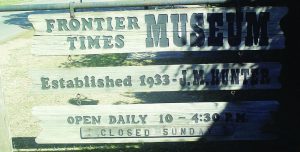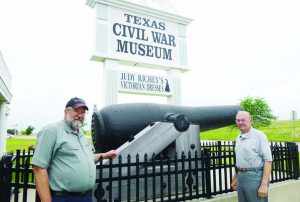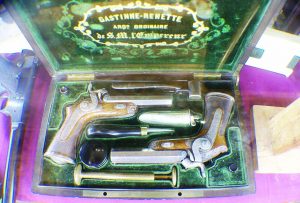By James C. Fulmer | Past President, NMLRA
“The North can make a steam engine, locomotive or railway car, hardly a yard of cloth or a pair of shoes can you make… You are bound to fail….At first you will make headway, but as your limited resources begin to fail, shut out from the markets of Europe, as you will be, your cause will begin to wane. If your people will but stop and think, they must see it in the end you will surely fail.”
—William Tecumseh Sherman, Head Master at the Louisiana State Military Academy, December 1860
By January 1861 Louisiana seceded from the Union and William Tecumseh Sherman would resign from the Louisiana State Military Academy. He would return to St. Louis, M), wanting nothing to do with the upcoming war, but after the south fired on Fort Sumter he requested an appointment to the Union army. In May of 1861 he received an appointment as a colonel and would go on and fight through the Civil War, reaching rank of general.
The American Civil War was a harsh long war of attrition as Sherman had predicted. It would take President Abraham Lincoln 3 years and 6 generals to find a man who would press the North’s advantage of men and equipment. It would be Gen. Ulysses S. Grant who was the man for the job. The war would rage on for years until the very last battle was fought at Palmito Ranch in Texas. The Confederates won the battle only to surrender to the Union when they found out the war had ended a month earlier with surrender on April 9, 1865 at Appomattox Court House in Virginia.

The Frontier Times Museum sign in Bandera, TX.
How this article got started with a quote from William Tecumseh Sherman was that it all started with my visit to the Texas Civil War Museum, located in Fort Worth. The Museum is a nonprofit 501(c) 3 corporation. The Museum opened on Jan. 24, 2006, as the largest Civil War Museum west of the Mississippi River. When I read it was the largest Civil War Museum west of the Mississippi I knew I had to stop and see the collections and exhibits.
When we arrived in the parking lot we were greeted by a 10-inch smoothbore coastal gun. When we went inside, purchased our tickets and I started through the exhibits I realized this was an exceptional museum. I went back out and searched out who was in charge and it turned out it was Executive Director Cynthia L. Harriman.
Cynthia then gave me information about the museum that read: “The museum was born out of the a passion shared by Ray and Judy Richey who in 1987 began collecting treasures of one of the United States’ most defining historical periods. His collection of Union and Confederate military artifacts is considered to be one of the largest private collections in the world. Her collection contains hundreds of Victorian-era dresses and accessories. Also housed at the museum is Texas Confederate Museum Collection of the Texas Division United Daughters of the Confederacy. The mission of the Texas Civil War Museum is to collect and preserve artifacts and other historical materials relating to the history of the American Civil War and the role Texas played in the conflict.”
The museum is laid out perfectly with eight galleries: Infantry, Cavalry, Artillery, Navy, Medical, Texas, Flags, and Dresses. The Confederate artifacts are exhibited on the south wall and the Union artifacts on the North wall in mirror images giving the visitor a unique opportunity to compare and contrast both armies.
The museum has an extensive collection of Federal and Confederate issued muzzle-loading rifles, carbines, pistols and cap and ball revolvers. It is the largest collection of different models of Civil War black powder guns I have seen in one place.
What made the museum interesting to me was not the amount of artifacts. It was that so many had a personnel history about the men who used and carried these artifacts. Something as personnel as Gen. Ulysses S. Grant’s cigar stub he smoked before the Battle of Cold Harbor began. Lock of hair of Maj. Gen. JEB Stuart cut off by his wife Flora the day he died at the battle of Yellow Tavern along with his compass and the pocket watch he carried through the whole war. The museum has the frock coat worn by Brig. Gen. Joseph Orville Shelby. There is a lock of Jefferson Davis’s hair, Robert E. Lee’s hair and many more other items. This is a museum you can’t walk through without stopping and reading about every item. When in Texas, near Ft Worth you must stop and see the museum. For more information, visit www.texascivilwarmuseum.com.

Author, left, and his oldest brother Elmer, right, standing with a 10-inch smooth bore confederate coastal gun with a range of 2.8 miles in front of the Texas Civil War Museum.
I visited many museums and historical sites when Linda and I spent three weeks in Texas. One of the museums was the Frontier Times Museum in Bandera, TX. This museum was started by J. Marvin Hunter Sr., who published a magazine called the Frontier Times in 1927. He encouraged his readers to send in stories of the Old West which he would publish. Not just stories came in but many artifacts from the Old West also arrived. He would often say “That he did not collect items, they collected him.”
The growing collection finally needed its own building and the Frontier Times Museum opened its doors on May 20, 1933. The building is unique and made entirely out of stone but was built too small as the collection continued to grow and a new addition was built in 1934 and another in 1935. After Marvin Hunter died in 1957 the museum was sold in 1960 to Mr. F.B. Doane, who had an interest for anything western. After his death a short time later his widow, and the family foundation, funded and operated the museum. In 1972, the Doane Gallery of western Art was added to the existing building and Mrs. Doane gifted the Museum to the residents of Bandera County. Today the Doane Foundation continues to be a supporter of this museum.
This museum in Bandera is not a museum you should drive by; there is something in it for everybody. It has a large gallery now dedicated to the American cowboy and local rodeo champions. It has the first piano brought to Bandera from Paris, France by the way of New Orleans. There is an original 1840 Hawken rifle and pouch and powder horn set on display with other numerous powder horns. Nature’s oddities abound in this Museum you can even find a two-faced goat. For more information go to www.frontiertimesmuseum.org
While I was in Texas I had to visit my friend Cletus Klein. He is more interesting than most museums. I first meet him at the Nation Rifle Association annual meeting and exhibits almost 20 years ago. For many years he has had a large display of muzzle loading rifles at the exhibit. Over the years he has won many awards for various collections. I have asked him numerous times which one is his favorite. I believe he actually teared up because it was like asking a parent who is their favorite child. His reply always is “all of them.” Linda took many pictures of his collection and the one I put in this magazine issue is of the Gastinne-Renette Dueling Pistols. Why? I had to pick at least one of his children to be pictured and why not the French Couple.

A set of Gastinne-Renette dueling pistols owned by Cletus Klein that where displayed at the Paris Fair in 1854.
Cletus has a lot in common with Ray and Judy Richey. Their collection helped to start the Texas Civil War Museum. J Marvin Hunter Sr., founder of the Frontier Times Museum, stated that this is the passion and love of their collection.
Cletus and I were talking about my personal collection and what I was going to do with it in the future. He said “We are only caretakers for them a short time here on earth. We can only hope the next person will take care and love them as much as we do.” Passion is a big word.
Just after this story was written, Cletus Klein passed away on June 19, 2018. Rest in peace, my old friend.



